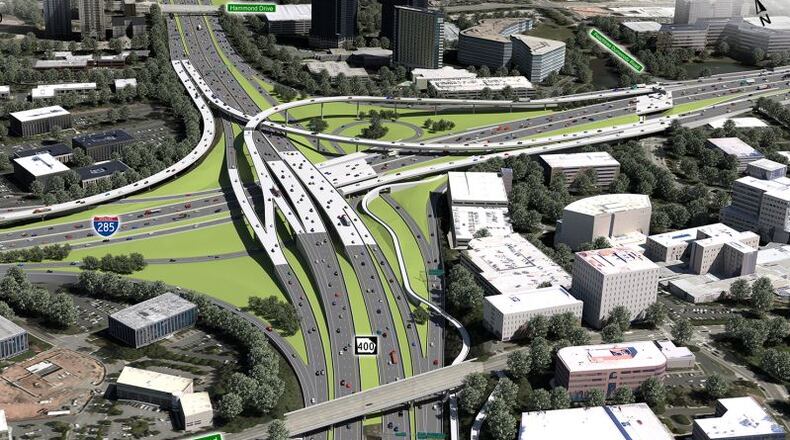Summer traffic is supposed to be light, right? Really that notion is a fallacy on the interstates, though rush hour patterns do slightly change. One route that is unexpectedly slow is GA-400/southbound each morning between Alpharetta and Sandy Springs. For the last few weeks, GDOT crews have blocked the right-flex shoulder lane between Northridge and the North Springs MARTA Station to clear out trees. The added 10-15 minutes to commuters’ trip times has understandably drawn ire.
Smilin’ Mark McKay views the delays each morning from the WSB Skycopter and Ashley Frasca is our Traffic Team’s main reporter on GA-400 during morning drive..
“Pretty consistently, we have watched crews block that right flex lane in Sandy Springs before 8 a.m. almost every day,” Frasca explains. “It certainly keeps the ride out of Alpharetta slower than it should be in the 8 o’clock hour. Folks see slow traffic from Haynes Bridge down to the MARTA Station.”
GDOT spokesperson Jill Goldberg shed some light on this daytime closure.
“[The] flexible shoulder lane closures are actually for the Transform 285/400 interchange project,” Goldberg stated via email. “The trees are being cleared for the collector-distributor lanes that are part of the project.”
The I-285/GA-400 project’s main objective is to channel local traffic onto separate collector-distributor lanes and ramps to keep the through lanes more open for traffic that is just passing through the area. Goldberg says that these CD lanes extend in both directions on GA-400 to the Spalding Drive overpass, just north of the North Springs Station.
So we know where and why the work is being done - but why do they have to work during morning drive in a lane that people have been accustomed to using the last few years?
“We’ve gotten lots of questions, too, about why we close it during the day. The reason is that tree clearing and the other land disturbing activities and associated heavy machinery are too dangerous to do in the dark/overnight hours,” Goldberg explains. “The contractor has to do the work in the daytime and to restrict it to in between the morning and afternoon flex shoulder hours isn’t effective. The contractor would not have enough time to do the work in that short window.”
The project includes CD lanes on I-285 also, but any tree-clearing there likely will be less disruptive during rush hours, since I-285 does not have any flex lanes. People do illegally drive in the emergency lanes sometimes and people in all lanes slow to look at flashing lights. I-285 likely has less trees to remove anyway.
Frasca brings some perspective on the big picture of the Transform 285/400 project. “For now, it’s a little pain, but will be all gain when the work is done.”
Frankly, this flex lane work spoils the summer feel on GA-400. But summer is also the best time of year for crews to work, both because of the weather and school being out. As Frasca said, we have to take a step back in comfort, to make two steps forward. Unfortunately, the Atlanta traffic problem is so big and ever-changing that commuters are always in this parallax toward improvement.
About the Author
The Latest
Featured


